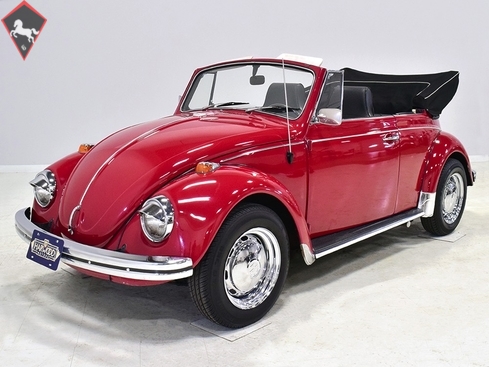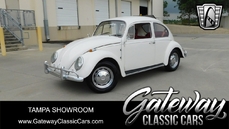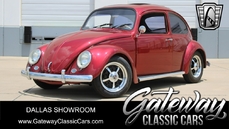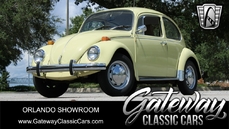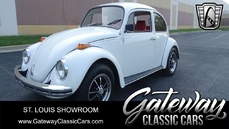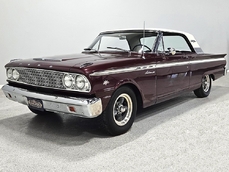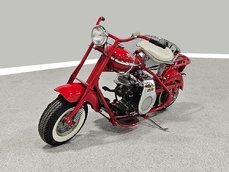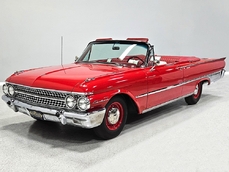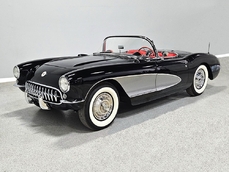Volkswagen Käfer Typ1 1600 cc flat-4 1968
Allgemeine Beschreibung :
The Volkswagen Beetle started out basic but ended its record-breaking production run as the world’s most famous automobile. Cute but durable, inexpensive to maintain and easy to drive, the Beetle put post-war Europe on wheels and introduced America to the appeal of simplicity and economy. And along the way, everyone discovered that the appealing little Bug was a lot of fun to own. Even when faced with obsolescence in the 1970s, the Beetle continued as an instant collectable, a toy car that embodied all the Bug’s virtues and added a touch of nostalgia. Today’s VW enthusiasts each have their favorites, but few will argue that this very pretty 1968 Volkswagen Beetle convertible isn’t a wonderful car to enjoy when the sun is warm.
Beetles are easy to love, so it shouldn’t be a surprise that this one has been with the same owner for more than 30 years. Over that time, he has pretty much restored everything on the car, making for one of the nicest VWs we’ve ever featured. The beautiful cranberry red bodywork was refinished a few years ago, and included repairing any rust they found, so it’s in first-rate condition today. Yes, there are a few signs of use, because part of loving a car like this is using it as intended, but it shines up beautifully and the color seems to draw more than its fair share of admirers. This ’68 Beetle retains all the traditional styling cues, including the smaller marker lights and red taillights, the flat windshield, and simple steel bumpers, which add to the charm. Fit and finish are typical Volkswagen, which is to say, excellent—these were inexpensive cars but they weren’t cheaply made. There’s some oxidation on the chrome bumpers, but it doesn’t affect the overall look and if you insist on perfection, replacements are inexpensive and easy to find. Fresh weather seals and fender welting make it feel substantial and it certainly has a cheerful look.
The black vinyl interior is recent and quite correctly done. New seat covers use proper textured vinyl to help make them a bit more comfortable on warm days and the firm padding underneath feels great when you’re behind the wheel. There are also new black rubber floor mats, matching door panels, and the most crisply rendered speedometer we’ve ever seen—it’s just beautiful. The big steering wheel features the Wolfsburg logo on the horn button, a nod to VW’s home town. The original AM radio is still in the dash and the familiar 4-speed manual shifter juts out of the transmission tunnel without any fanfare. Rear seat accommodations are actually comfortable for real-sized adults, making this an old car that’s surprisingly practical in today’s world. The heavily insulated convertible top is new, too, and lives under a custom-made black canvas boot that’s a nice upgrade over the original vinyl. The forward trunk compartment is full carpeted and quite nicely finished, and includes what appears to be an original spare tire complete with the unique air pressure system for the windshield washers.
The familiar 1600 cc air-cooled flat-four is a fresh crate motor that was rebuilt to stock specs and professional installed under the rear deck. It carries a new carburetor, correct Bosch ignition components, and even a factory air cleaner up top. It also features the stock hot air ducts, a big generator (1968 was the first year for a 12-volt electrical system), and new wiring. It starts easily without any fussing, and that familiar whoosh of the air-cooled VW is somehow comforting, as if you know this car will take you anywhere you want to go. There’s plenty of torque on tap to make it feel zippy around town and its reputation for being thrifty is legitimate, making this a hobby car you can own without draining your bank account. Parts are plentiful, service advice is readily available, and keeping it in peak condition is something that even a marginally handy owner can manage. This is a great place to start if you’re new to the hobby and a fun car to own if you’re already a VW fan.
Underneath it’s a little grimy, but that only means that it has been driven and used as intended. When the car was painted a few years ago, the floor pans were also replaced, so it’s quite solid underneath (floor replacement on a Beetle is not a big deal). Brakes and steering are standard Beetle equipment and the 4-speed manual transmission shifts as well as any we’ve driven, although it’s still a bit vague (no avoiding that). A newer exhaust system sounds right and handling is agile enough without being brittle. Chrome steel wheels add some flash and it carries fresh 165/80/15 radials that ride and handle great.
Extras include an owner’s manual, a repair manual, and some spare parts. It also comes with a set of matching models.
This attractive Bug is everything it appears to be—well restored, fully sorted, and very attractive. It drives as well as it looks and everyone is your friend when you’re driving a Beetle. Today, as when it was new, it’s affordable and asks for very little from its owner, so you can enjoy a trip to the past without an expensive machine to take you there. Honestly, I don’t think the guys with more expensive cars are having any more fun than you will behind the wheel of this VW. Call today!
http://www.harwoodmotors.com/vehicles/inventory_details.php?id=1063
1968 Volkswagen Käfer Typ1 1600 cc flat-4 is listed verkauft on ClassicDigest in Macedonia by for $19900.
Fakten der Auto
Karosserietyp : Auto Marke : Volkswagen Modell : Käfer Typ1 Ausführung : 1600 cc flat-4 Hubraum : 0.0 Modelljahr : 1968 Karosstyp : Convertible Lage : Ohio
Verkauft
Angaben Zum Verkäufer
Verkauft
People who viewed this Volkswagen Käfer Typ1 also viewed similar Volkswagen listed at ClassicDigest
Other cars listed for sale by this dealer
über Volkswagen
Die Volkswagen-Geschichte ist in der Tat eine faszinierende Geschichte von Innovation, Belastbarkeit und Wiederbelebung nach dem Krieg, die von verschiedenen Modellen gekennzeichnet ist, die in der Automobilgeschichte zu Ikone geworden sind.Das Volksauto (Volkswagen): Zunächst von Adolf Hitler in den 1930er Jahren als "Volksauto" oder "Volkswagen" auf Deutsch vorgestellt, war die Idee, ein erschwingliches und praktisches Fahrzeug für das deutsche Volk zu schaffen. Dieses Konzept führte zur Entwicklung des von Ferdinand Porsche entworfenen Volkswagenkäfers (oder des Typ 1).
Nachkriegsherausforderungen: Nach dem Zweiten Weltkrieg stand Volkswagen erhebliche Herausforderungen. Die Fabrik war stark beschädigt, und die Verbindung der Marke mit dem NS -Regime führte in einigen Regionen zu einem mangelnden Interesse an dem Auto.
Britische Intervention - Die britische Armee & Ivan Hirst: Die britische Armee übernahm die Kontrolle über die Fabrik in der unmittelbaren Nachkriegszeit. Major Ivan Hirst, ein Offizier der britischen Armee, spielte eine entscheidende Rolle bei der Wiederbelebung von Volkswagen. Er erkannte das Potenzial des Käfers und setzte sich für seine Produktion ein. Er überzeugte das britische Militär, mehrere tausend Autos zu bestellen. Diese Entscheidung hat dazu beigetragen, die Wiederbelebung der Marke zu starten.
Exporterfolg und der globale Anziehungskraft des Käfers: Der Käfer gewann nicht nur in Deutschland, sondern auch weltweit an Popularität und wurde zu einer Ikone des erschwinglichen Fahrwerks. Das einfache, zuverlässige Design und das einzigartige Erscheinungsbild machten es zu einem Favoriten unter den Verbrauchern weltweit.
Modellentwicklung: Im Laufe der Jahre führte Volkswagen verschiedene Modelle neben dem Käfer ein, wobei jeder zum Wachstum der Marke beitrug:
Typ 2 (VW -Bus oder Transporter): In den 1950er Jahren wurde er in den 1960er Jahren zu einem ikonischen Symbol der Hippie -Bewegung eingeführt und wurde wegen seiner Geräumigkeit und Vielseitigkeit geliebt.
Golf (Kaninchen in den USA): Der Golf (oder Kaninchen in den USA) wurde Mitte der 1970er Jahre ins Leben gerufen und markierte eine Verlagerung in Richtung Frontantrieb, modernes Design und Schrägheckpraktikabilität und wurde zu einem Eckpfeiler des Erfolgs der Marke.
Passat, Jetta und andere Modelle: Volkswagen erweiterte seine Aufstellung mit Modellen wie dem Passat und Jetta, die sich für verschiedene Marktsegmente befassen.
Herausforderungen und Innovationen: Trotz des Erfolgs stand Volkswagen vor Herausforderungen, einschließlich Qualitätsproblemen in den 1970er Jahren. Die Marke hat jedoch weiterhin neue Modelle und Technologien entwickelt und entwickelt.
Aufstieg des GTI und globaler Expansion: In den 1980er Jahren stieg der legendäre Golf GTI auf, eine Hochleistungsversion, die den Trend der heißen Luke auslöste. Volkswagen erweiterte auch seine globale Präsenz in diesem Zeitraum.
Die britische Intervention bei der Wiederbelebung von Volkswagen nach dem Zweiten Weltkrieg spielte eine entscheidende Rolle bei der Wiederbelebung der Marke. Während es in den 1950er und 1960er Jahren aufgrund des Erfolgs von Volkswagen in den 1950er und 1960er Jahren möglicherweise einige Spannungen oder einen Wettbewerb zwischen Automobilunternehmen gegeben hat, hat die Fähigkeit der Marke, innovative und beliebte Modelle zu produzieren, ihren Platz in der Automobilgeschichte festigend.
